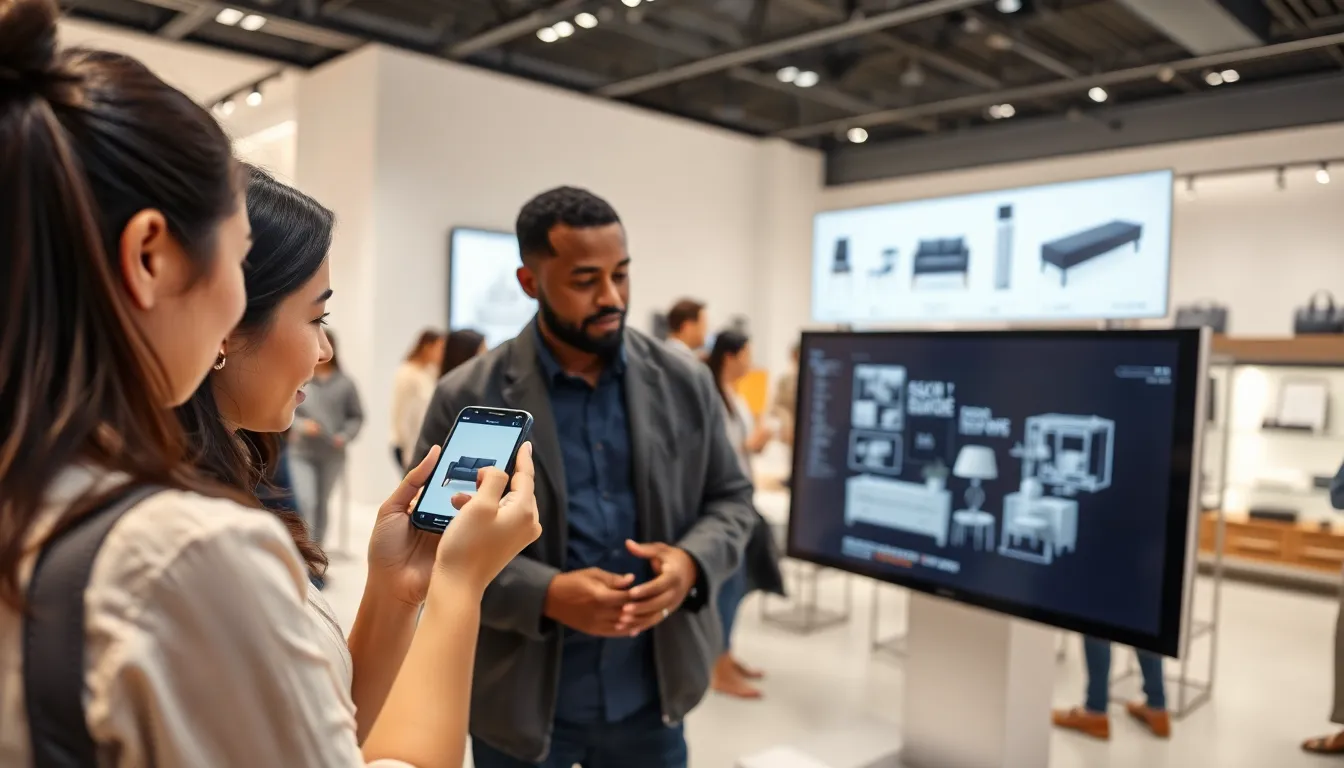Picture this: you’re lounging on the couch, yet somehow, you can try on that trendy jacket you’ve been eyeing or see how that new couch would look in your living room, all without stepping a foot outside. Welcome to the world of augmented reality in e-commerce, where shopping no longer means navigating crowded malls or enduring long lines. With the swift rise of digital technologies, augmented reality (AR) has transformed how consumers approach online shopping, making it more interactive and engaging. Ready to explore this game-changing technology and some stellar examples that demonstrate its impact? Let’s immerse.
Table of Contents
ToggleOverview of Augmented Reality in E-Commerce

Augmented reality has reshaped the landscape of e-commerce by merging the physical and digital worlds. By overlaying digital content onto real-world environments, AR enhances the shopping experience, allowing users to visualize products in ways that traditional online shopping simply cannot. Brands are harnessing AR to create immersive experiences that empower customers, making shopping more intuitive and personal. As the technology continues to evolve, the lines between in-store shopping and online browsing are further blurred, leaving consumers with newfound capabilities to engage with products like never before.
Benefits of Augmented Reality in Shopping
The integration of augmented reality into e-commerce offers a multitude of advantages for both consumers and retailers.
- Enhanced Customer Engagement: AR allows customers to interact with products in a 3D space, significantly boosting engagement. Shoppers can experiment with items until they find the perfect fit or style.
- Reduced Return Rates: One major headache for online retailers is the high return rate due to mismatched expectations. AR helps mitigate this by providing a more accurate representation of products, so customers know exactly what they’re getting.
- Increased Sales: Multiple studies indicate that AR-driven tools can drive higher conversion rates. When potential buyers can visualize items in their own environment, they’re more likely to complete a purchase.
- Brand Differentiation: In a crowded market, utilizing AR technology can set a brand apart. Innovative experiences lead to memorable impressions that build customer loyalty.
Adopting augmented reality in e-commerce is not just a trend: it’s becoming essential for staying competitive.
Notable Augmented Reality E-Commerce Examples
Here are some standout examples of brands leveraging augmented reality to elevate the e-commerce experience:
1. Virtual Try-On Solutions
Retail brands, particularly in fashion and beauty, have embraced virtual try-on technology. Companies like Sephora and Warby Parker allow users to place virtual makeup on their faces or wear glasses digitally to see how products complement their looks. This technology enhances customer confidence in their purchase decisions, leading to higher satisfaction levels.
2. Interactive Product Demos
IKEA is a pioneer in utilizing AR for interactive product demonstrations. Through its app, customers can visualize how different furniture pieces fit into their living spaces. They can place a virtual sofa or table in their home using their smartphone camera, making it easy to see dimensions and styles in context.
3. Augmented Navigation in Stores
Some retailers are taking the experience a step further by employing AR for in-store navigation. Brands like Lowe’s have developed apps that guide shoppers through the aisles, helping customers locate products and sending them digital coupons along the way. This innovative approach not only enhances the in-store experience but also drives foot traffic while increasing sales.
4. Home Decor and Furnishing Solutions
The app ‘Houzz’ allows users to visualize potential home renovations or decor changes through AR technology. Users can view how furniture and decor items will look in their homes before making a purchase. This additional layer of consideration helps to reduce buyer’s remorse and promotes customer satisfaction.
Future Trends in Augmented Reality E-Commerce
As technology continues to advance, the future of augmented reality in e-commerce looks promising. Here are a few trends on the horizon:
- More Personalized Experiences: Expect more tailored shopping experiences driven by AR. Brands will use customer behavior data to deliver personalized content that resonates with individual preferences and previous purchases.
- Integration with Artificial Intelligence: The intersection of AR and AI can lead to more sophisticated applications. Imagine virtual shopping assistants that use AI to recommend products based on your style and previous choices, all while using augmented reality to present them right in front of you.
- Increased Accessibility: With improvements in AR technology and smartphone capabilities, more retailers will carry out AR features, making this technology accessible to a broader audience. This means more products across various industries will benefit from AR, breaking the barriers that once kept it confined to a select few brands.
- Social Commerce: There will likely be a rise in AR-enabled social shopping experiences. Platforms like Instagram and Pinterest are already experimenting with AR, allowing users to try on cosmetics or clothes directly through their apps. As social media continues to integrate shopping, AR will play a crucial role in making these interactions seamless.
Challenges and Considerations
While the benefits of augmented reality in e-commerce are evident, there are challenges to overcome.
- Technical Limitations: Developing AR applications can be expensive and technically challenging. Brands need to invest in quality AR solutions, which may not be feasible for smaller businesses.


